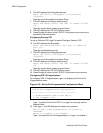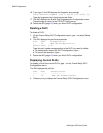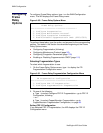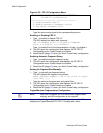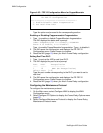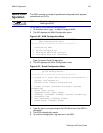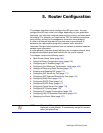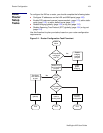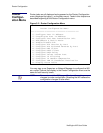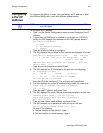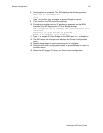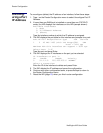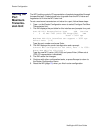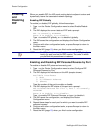
NetEngine IAD User Guide
This chapter describes how to configure the IAD as a router. You may
configure the IAD as a router or a bridge, depending on your application.
Optionally, you may also configure some ports for routing, and some ports
for bridging. For example, you might set up PPP for Internet connections
using routing, and set up a management connection using bridging.
A router is a network layer device that uses one or more metrics to
determine the optimal path along which network traffic should be
forwarded. Routers forward packets from one network to another based on
network layer information.
A router generally improves overall efficiency for a complex network, but a
bridge provides better speed and flexibility for the overall network.
This chapter contains the following topics:
Basic Router Setup Tasks (page 104)
Using the Router Configuration menu (page 105)
Configuring an IP Address (page 106)
Configuring Port Maximum Transmission Units (page 109)
Adding and Removing Static Routes (page 112)
Enabling and Disabling RIP (page 110)
Configuring RIP Version by Port (page 111)
Configuring RIP Poisoned Reverse by Port (page 110)
Configuring DNS Client (page 114)
Configuring DHCP Client (page 114)
Configuring DHCP Relay (page 117)
Configuring Telnet Server Port (page 119)
Configuring IP Filtering (page 119)
Configuring IP Header Compression (page 126)
Configuring LAN IP Broadcast Destination (page 127)
Displaying the Route Table (page 127)
5. Router Configuration
NOTE
When the IAD prompts you for input, the current value is
displayed in parentheses. To conveniently accept the current
value, just press Enter.



